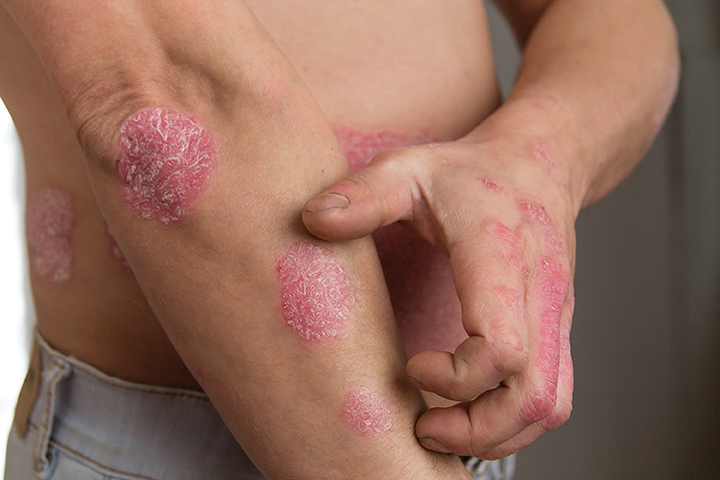The National Psoriasis Foundation’s new (NPF) Psoriasis Health Indicator Report features the latest information on psoriasis prevalence, risk factors, and comorbidities as well as the public stigma and perception of psoriasis, the impact of the disease in the workplace and community life, and the effects of psoriatic disease on quality of life.
The NPF developed the Psoriasis Health Indicator Report with input from researchers and clinicians in the field of psoriasis and psoriatic arthritis (PsA).
The report was made possible as part of a three-year grant from the Centers for Disease Control that NPF received in 2021.
“This report will be a great tool for public health officials, health care providers, and researchers in our field to help them better understand the health impacts of this disease for the more than 8 million people in the U.S. living with psoriasis,” says Leah M. Howard, JD, the President and CEO of NPF, in a news release.
Some key data include:
Prevalence
- Psoriasis affects an estimated 3.0% of the adult population 20 years of age or older in the United States, or more than 7.5 million adults.
- Approximately 600,000 adults in the United States live with undiagnosed psoriasis.
Risk
- If no parent has psoriasis, the lifetime risk of developing the disease is 4%.
- If one parent has the disease, the lifetime risk of developing psoriasis is 14 – 28%. The risk of developing psoriasis increases dramatically to 40 – 65% if both parents have psoriasis.
Quality of Life
- More severe psoriasis and disease activity involving the scalp, face, hands, feet, or genitals are associated with increased quality of life impact.
- Fully 29.3% of individuals with psoriasis experience some limitation in their ability to participate in social roles and activities.
“This report is full of data that address a number of questions that health care providers, researchers, and patients have about psoriatic disease. Who gets psoriasis, and why? Why should public health officials be concerned with this disease? What impact does psoriasis have on youth?” adds Guy Eakin, PhD, the Chief Scientific and Medical Officer for NPF. “In addition to addressing those frequently asked questions, one facet I appreciate the committee including in this report is the deep dive into the impact of health disparities in our community. We’re working hard on better treatments and eventually a cure, but it’s only a cure if it works for all people in all walks of life.”
The authors included data connecting psoriasis and its related conditions to existing national goals. Because publicly available national data on the health of individuals with psoriasis are very limited, authors were able to use a limited number of studies published in peer-reviewed scientific journals that utilize publicly available national data on psoriasis, with the majority of data compiled in this report collected from published studies using other data sources, including:
- Patient registries
- Surveys of patients and providers
- Systematic literature reviews and meta-analyses
- Insurance claims databases
The Psoriasis Health Indicator report is available online.


